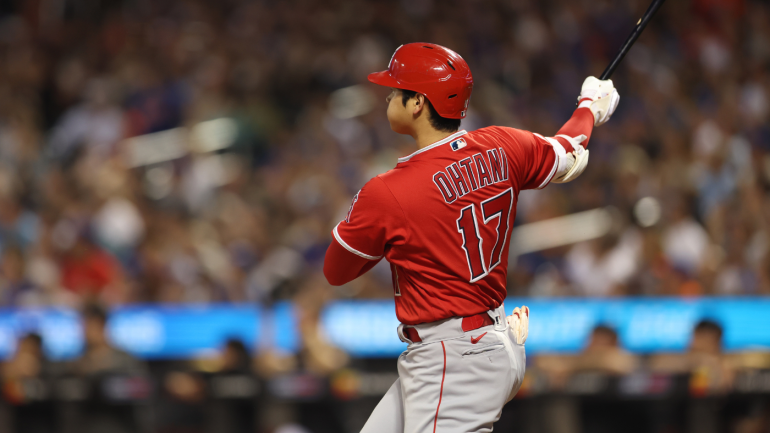
The big news in the baseball world this past week was the injury to Angels' two-way superstar Shohei Ohtani. He's done pitching for the season and many assume he'll have Tommy John surgery to repair the torn ulnar collateral ligament (UCL) in his right elbow, though he's waiting on a second opinion. Still, he's decided to continue in the lineup as a designated hitter for now and did so Friday night against the Mets.
Astute baseball minds might also recall that Phillies superstar Bryce Harper served as a DH for a large portion of last season and all through the playoffs, including the World Series, with a torn UCL.
Given history, when players with similar diagnoses were shut down immediately and went under the knife, there are some obvious questions. As I'm only a member of the media and not a medical doctor, I figured I'd ask one. CBS Sports conducted a quick interview with Dr. Rodney Benner, an orthopedic surgeon in Indianapolis.
My questions are bolded and Dr. Benner's answers are as follows in his words.
What is a torn UCL and why can't players pitch or even throw through it?
The ulnar collateral ligament is the main stabilizing ligament on the inside of the elbow. With repetitive maximum velocity throwing, the ligament is subjected to extremely high tension that can overcome its ability to withstand stress. This can happen all at once or, more commonly in pitchers, with repeated attrition/stretching over time. Once the ligament is torn, the inside of the elbow is unstable, and throwing velocity can drop significantly, as can accuracy. This is particularly the case with overhead pitching, in which the pitcher is nearly always throwing with maximum effort and the release point must be finely tuned and perfectly match to speed. Some players may be able to throw effectively with instability from an ulnar collateral ligament tear, but that's very difficult or impossible with pitchers.
Masahiro Tanaka rehabbed a partially torn UCL and never had Tommy John surgery. We've heard of some players trying PRP injections in hopes to avoid Tommy John surgery. Is TJ the best path for a full return, generally speaking?
This really depends on the degree of ligament injury and instability. Partial tears may be able to heal effectively with rehabilitation and time. This is often a difficult proposition for the athlete and treating physicians. If rehab is able to achieve sufficient ligament healing, a longer arduous post-surgical period may be avoided. However, if the ligament does not heal, the surgical treatment and eventual return to competitive pitching is delayed. As such, the treating physician must review MRI images, examine the athlete's elbow, and have a discussion with the athlete regarding options.
Platelet-rich plasma (PRP) is a technique in which the athlete's blood is drawn and out in a centrifuge to separate the blood's component parts. The platelet layer has an increased concentration of growth factors that can assist the body's normal biology with soft tissue healing. Physicians may opt to attempt to augment and improve ligament healing in this way.
Ultimately, if the imaging review and physical examination are consistent with instability that is unlikely to heal with nonsurgical management, or if non-surgical management fails to achieve healing, ulnar collateral ligament reconstruction ("Tommy John surgery") is the favored strategy to restore stability to the elbow.
Why can players keep hitting with a torn UCL, such as Bryce Harper last year or Ohtani this year?
The instability that results from a UCL tear is most evident with extremes of range of motion that overhead throwers subject their elbows to. If the elbow isn't out in that extreme position, the instability isn't symptomatic, kind of like when an athlete with a torn ACL can walk normally and tolerate straight ahead activity, but their knee gives out with cutting/twisting. The swing doesn't stress the elbow nearly as much, especially in the right arm of a left-handed hitter, as in Ohtani and Harper's cases.
Does hitting with a torn UCL put the hitters at risk of additional injury?
Hitting should not be a problem, and also wouldn't cause any increased damage to the torn ligament.


















